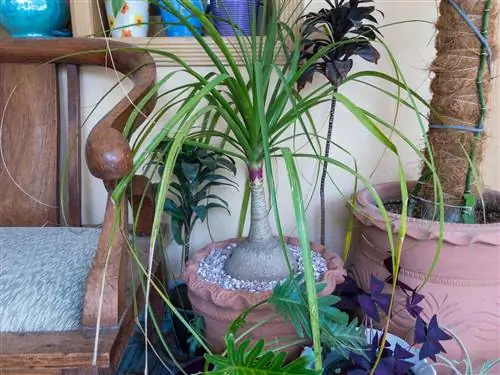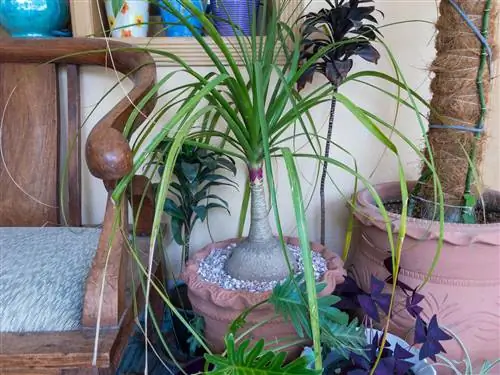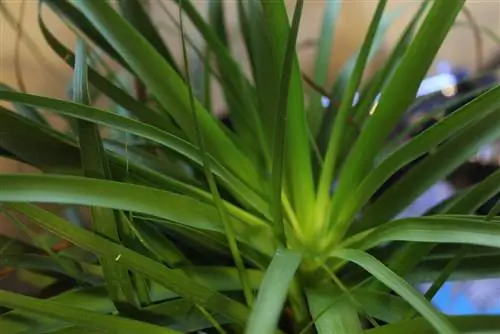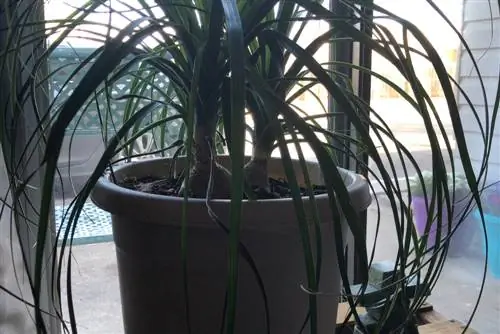- Author admin [email protected].
- Public 2023-12-16 16:46.
- Last modified 2025-01-23 11:22.
Knipped elephant foot leaves are an alarm signal. With this damage pattern, the exotic houseplant reacts to care errors and unfavorable location conditions. Read tips for effective countermeasures here. This is what you can do if the leaves on the elephant's foot break off.

What to do if leaves break off on the elephant's foot?
If elephant foot leaves break off, you should repot the houseplant andwater more sparinglyOnly fertilize every 4 weeks. A sunny winter at 6° to 12° Celsius is helpful against broken leaves. The most common causes of this damage arewaterlogging,nutrient excessandlack of light
Why do leaves break off on the elephant's foot?
The most common causes of broken elephant foot leaves arewaterlogging,nutrient oversupplyandLack of light.
If excess irrigation water cannot drain away, root rot occurs. Rotten roots no longer transport nutrients to the crown, causing the weakened leaves to break off. An elephant's foot reacts to too frequent fertilization with fattening growth. A lot of leaf mass is formed in a short time. The leaves lack strength and break. Lack of light in winter quarters that are too warm causes soft leaf tissue that cannot withstand gravity for long.
How to prevent elephant foot leaves from snapping?
Act as a preventive measure against broken elephant foot leavesWatering after finger testing,economical fertilizationand acool, sunny wintering. This is how it works:
- Water elephant foot when the substrate is noticeably dry.
- Pour excess water out of the saucer.
- From May to September, add liquid cactus fertilizer to the watering water every 4 to 6 weeks.
- Elephant feet overwinter in a sunny location at 6° to 12° Celsius.
- In the winter quarters, water little by little and do not fertilize.
Repot immediately if waterlogged
You should repot an elephant foot with a dripping wet root ball as soon as possible, before root rot forms and the leaves break off.
Should you cut off broken elephant foot leaves?
You should notcut off broken leaves on the elephant's foot immediately. There is a chance that the leaves will recover.
Broken leaves that do not recover turn yellow and dry up. Completely dead elephant foot leaves can be removed from the leaf tuft to avoid cuts.
Tip
Spray elephant foot
Regular spraying protects the elephant foot from dust deposits, pests, brown leaves and leaf tips. In cool winter quarters, watering too frequently is a typical care mistake. By spraying the leaves, you can effectively prevent waterlogging and root rot. Ideally, you should spray a bottle tree every 10 to 14 days. Use room temperature, low-lime tap water or collected, filtered rainwater.






